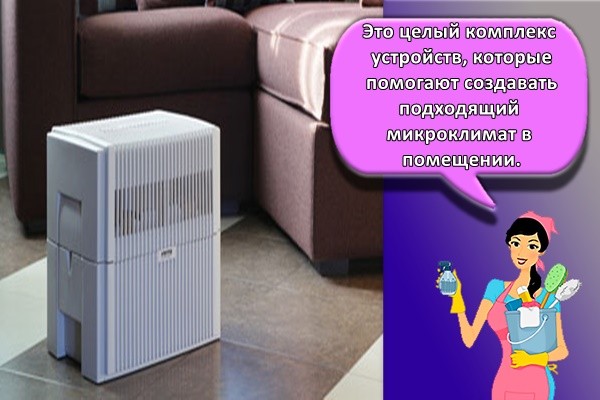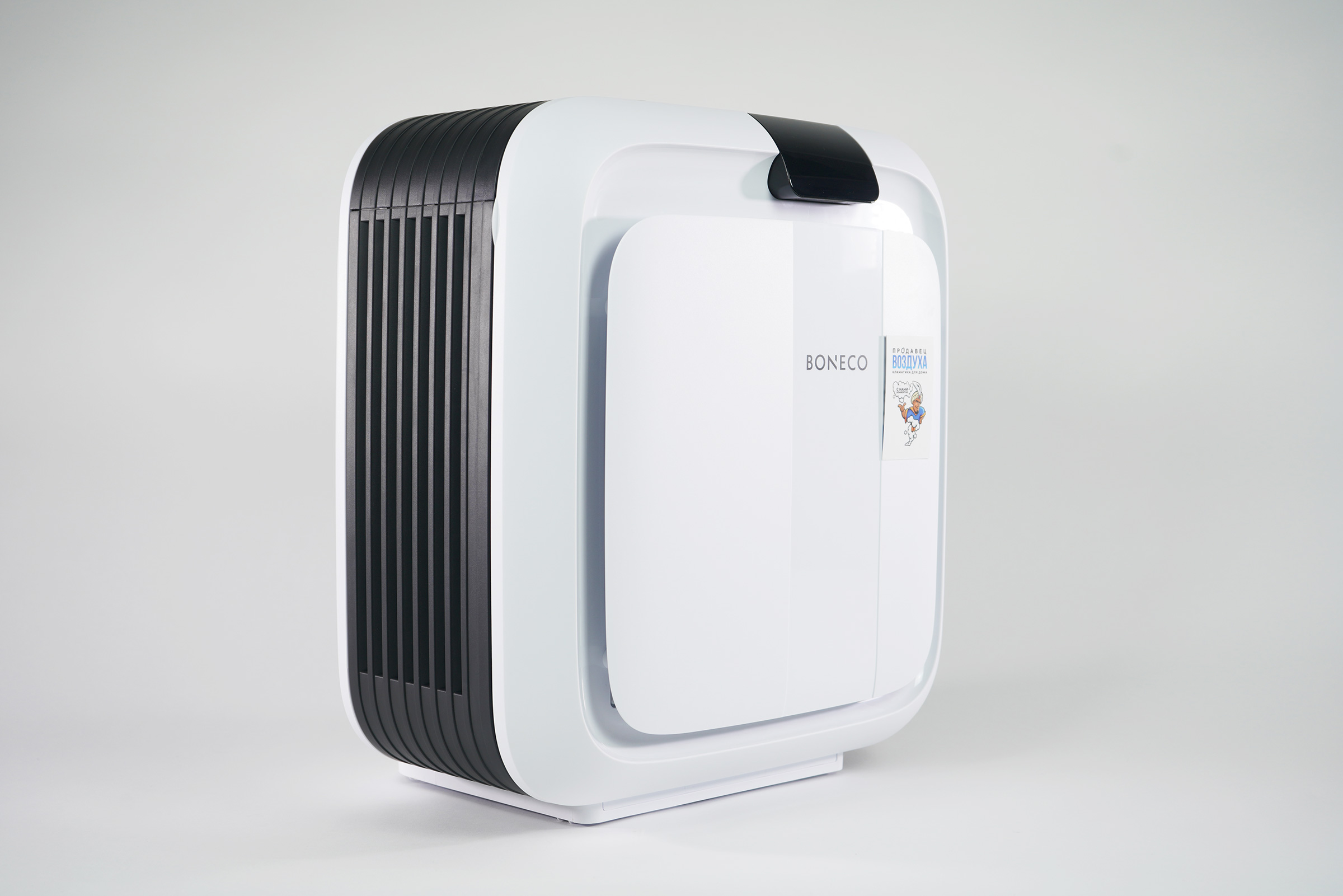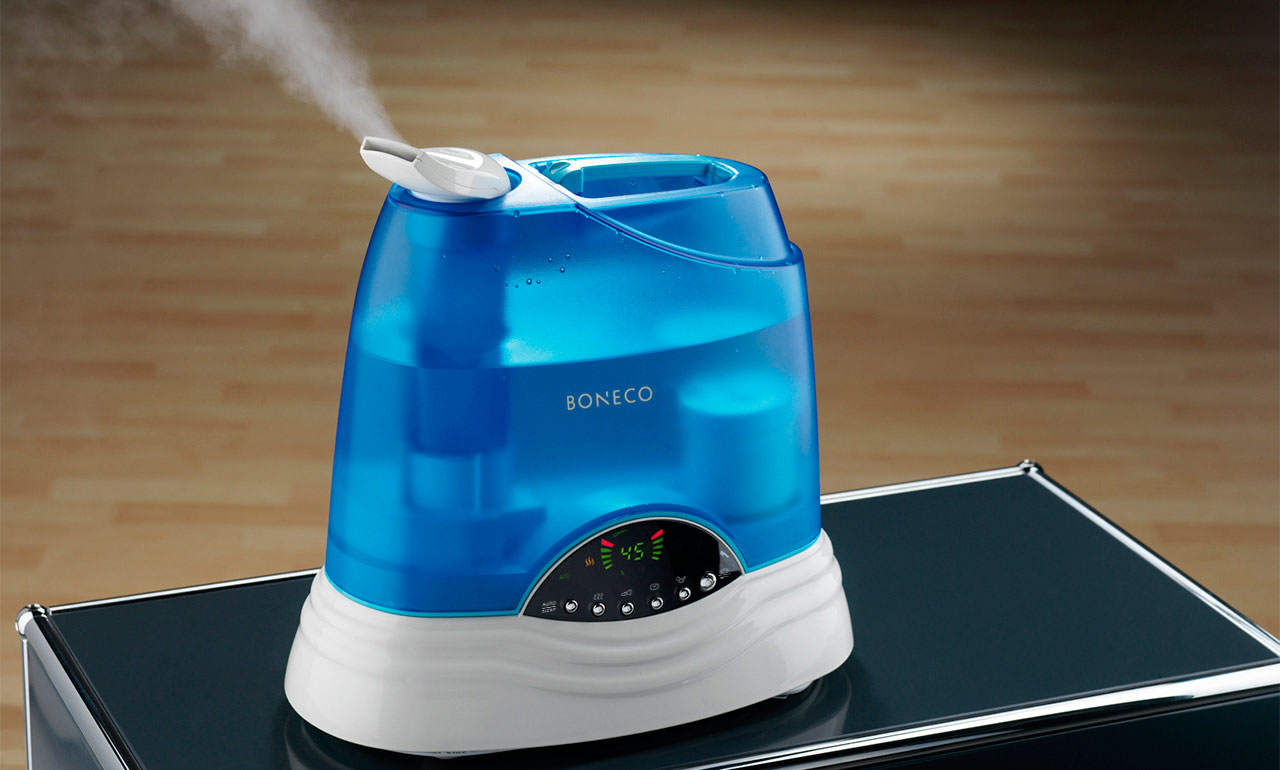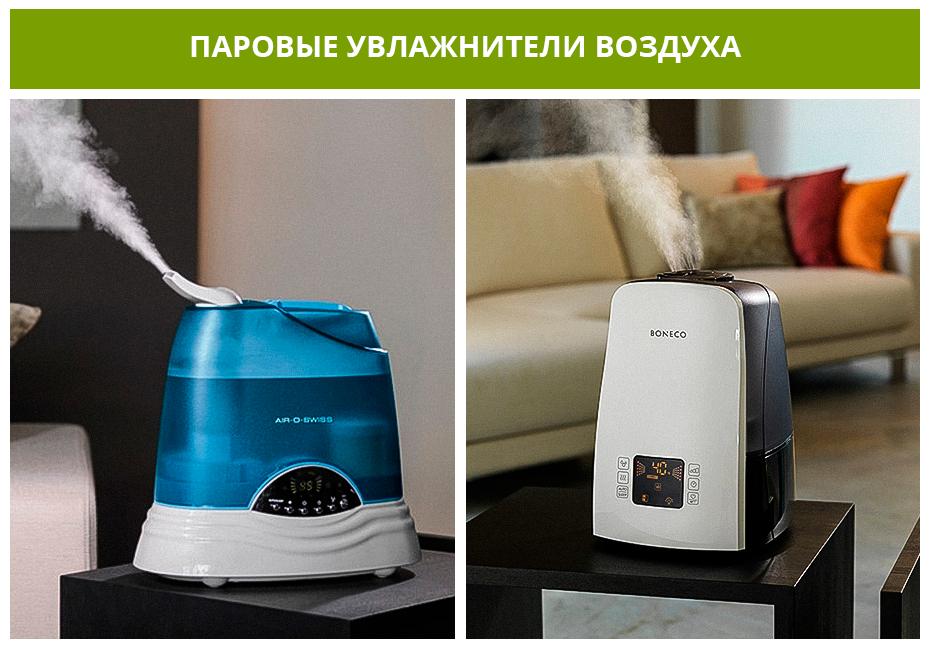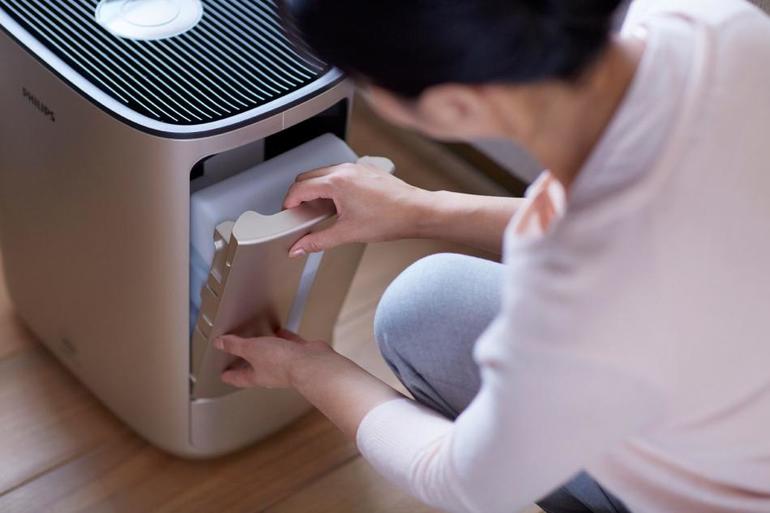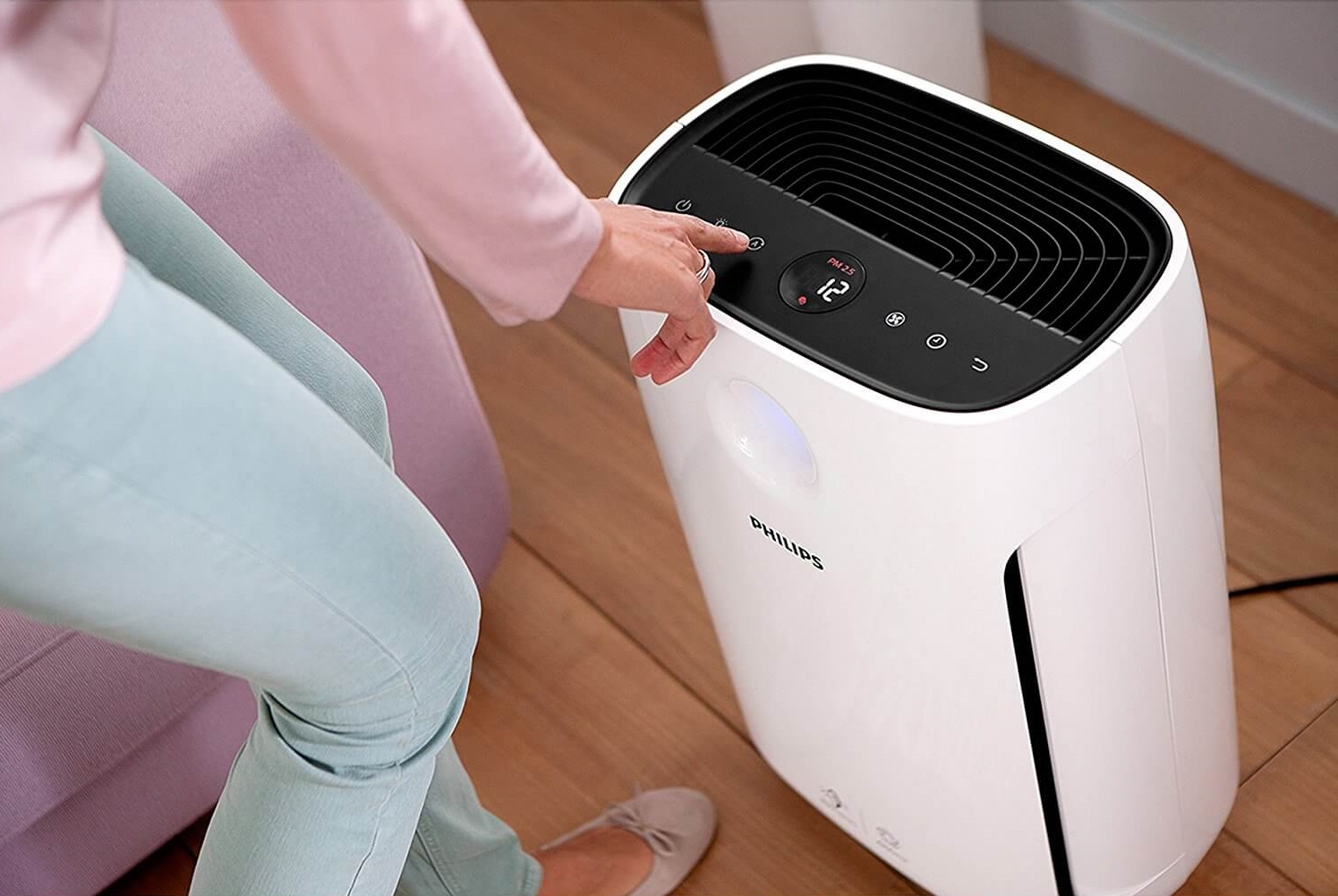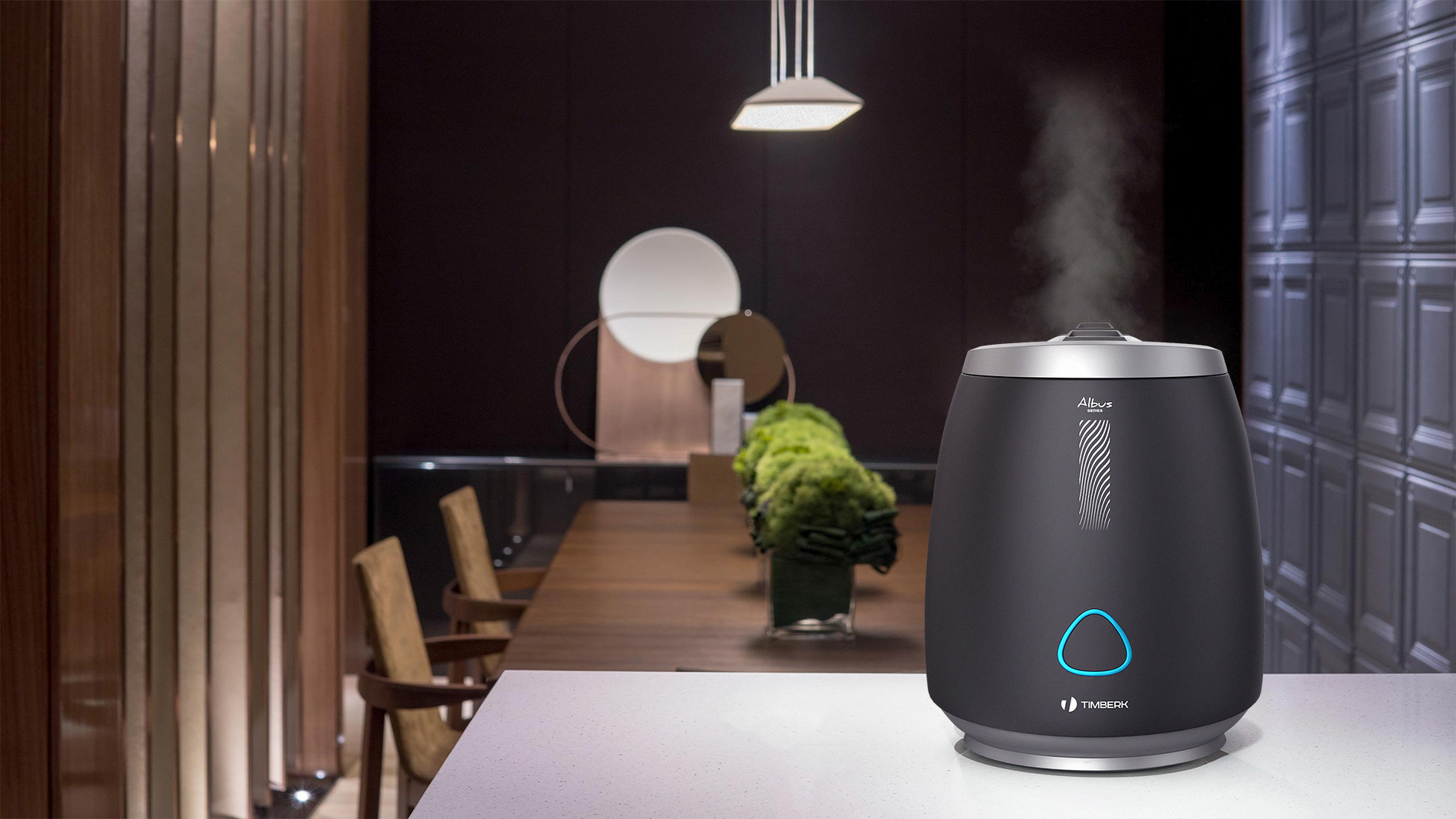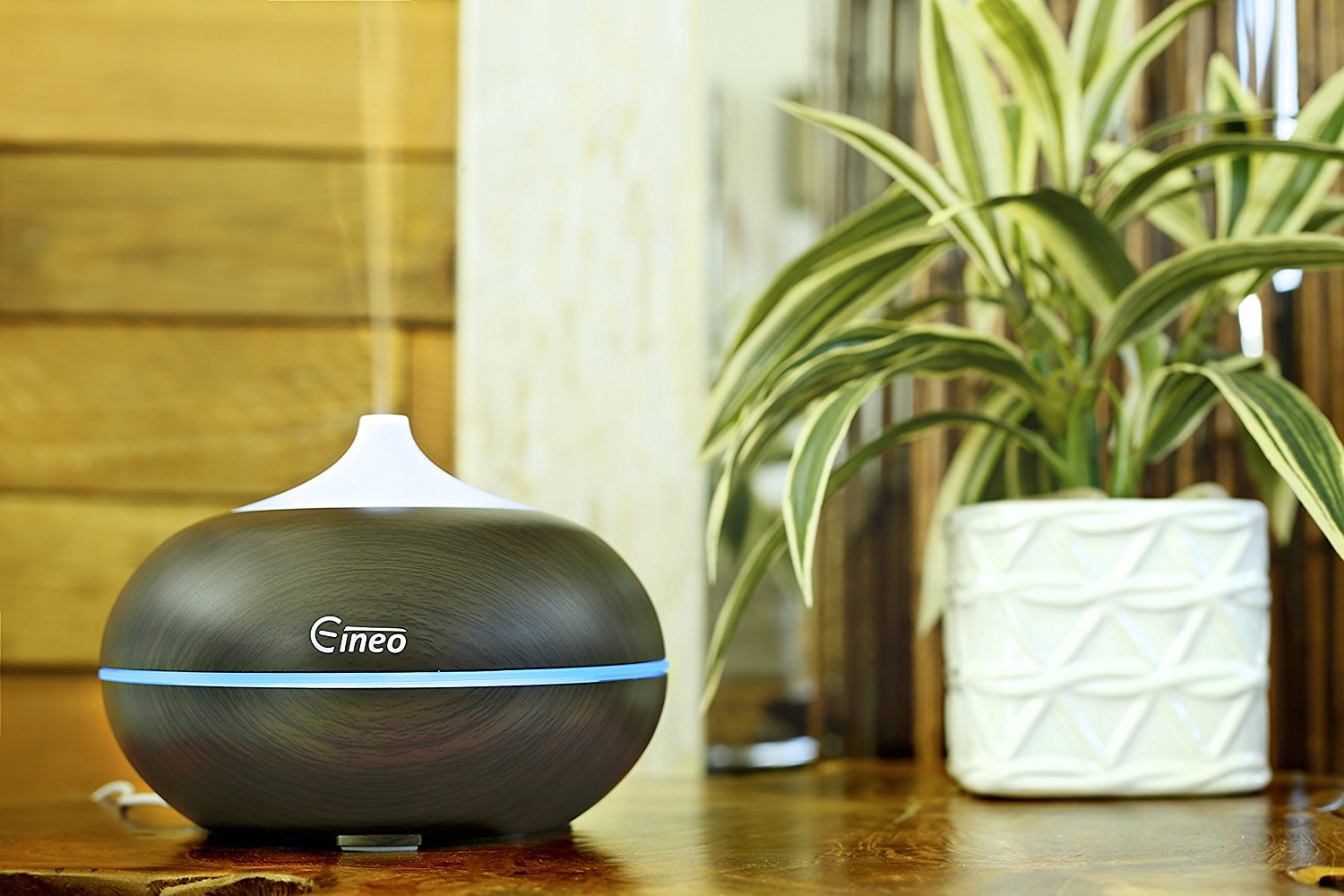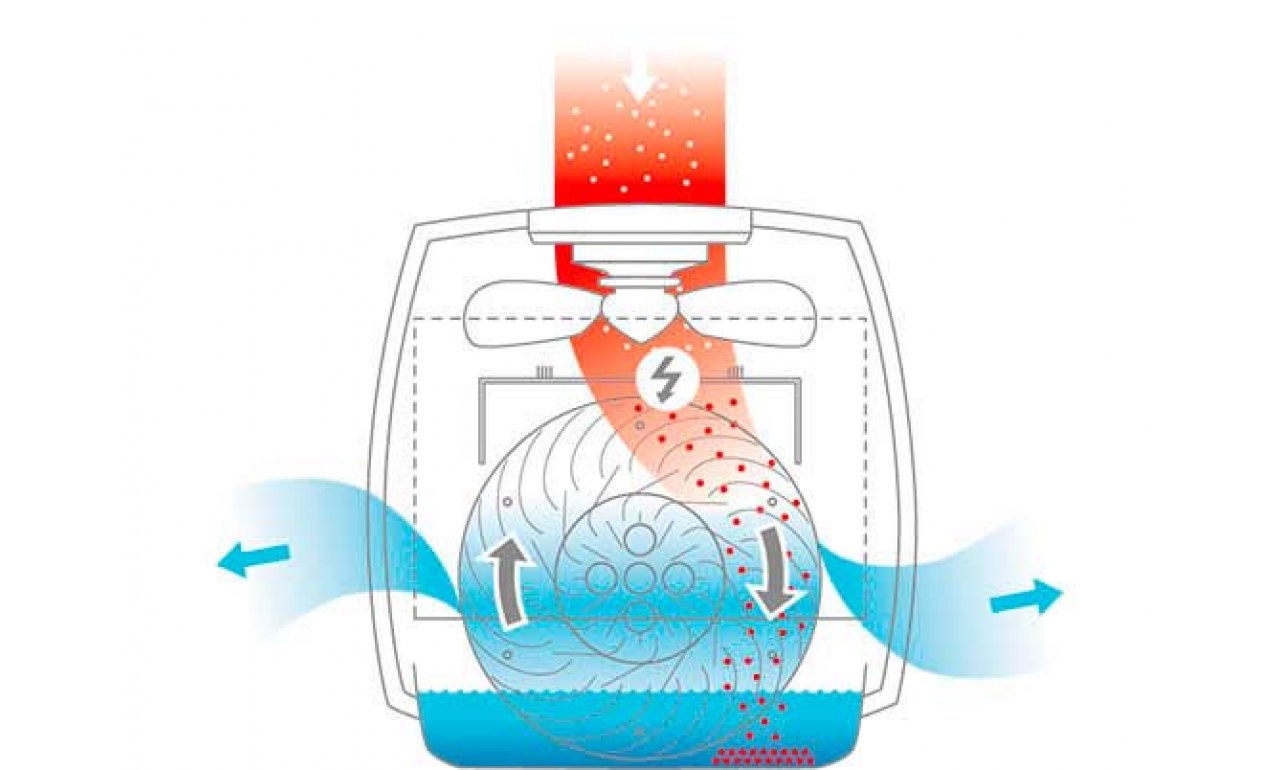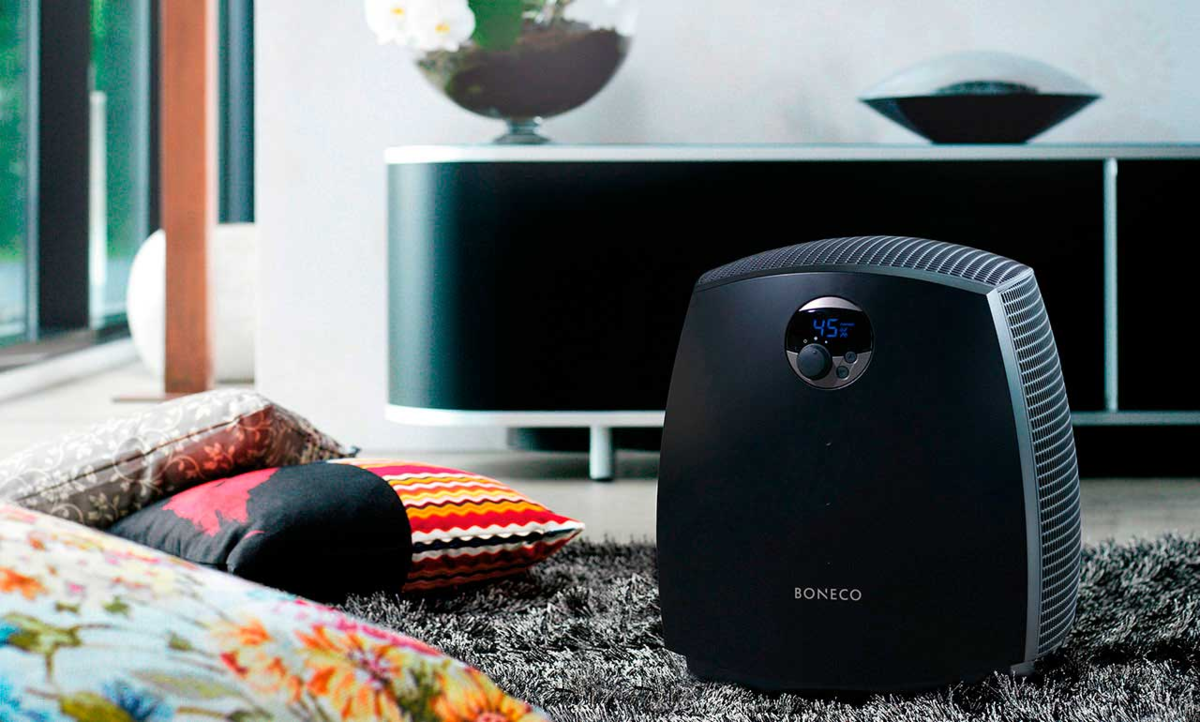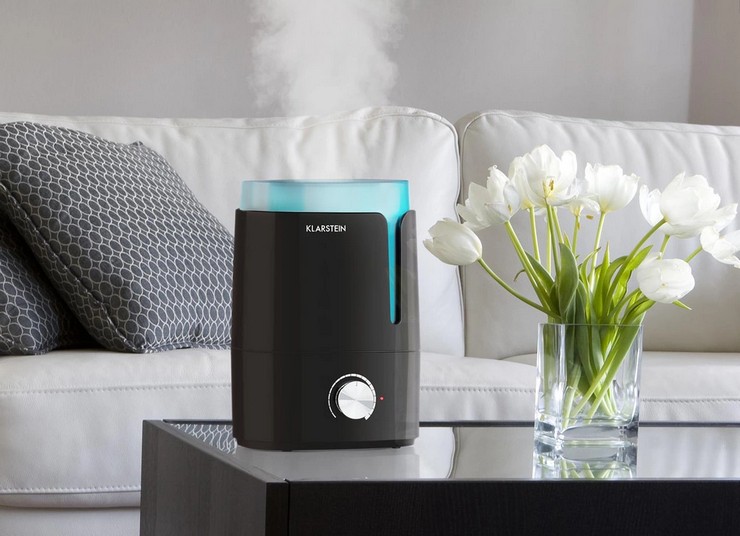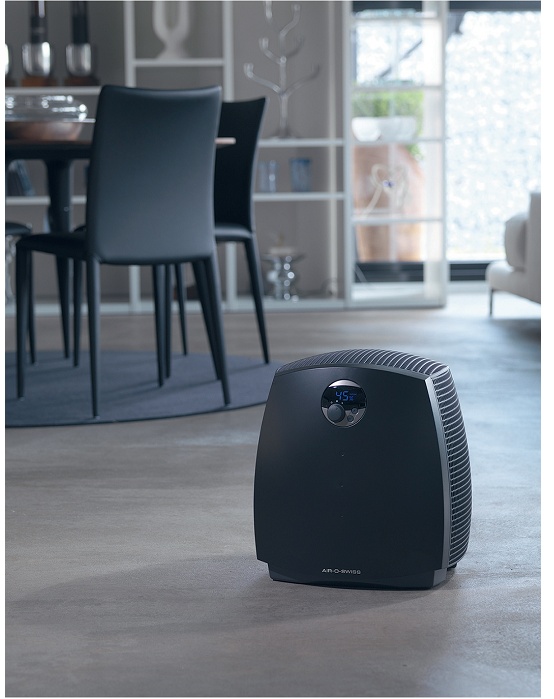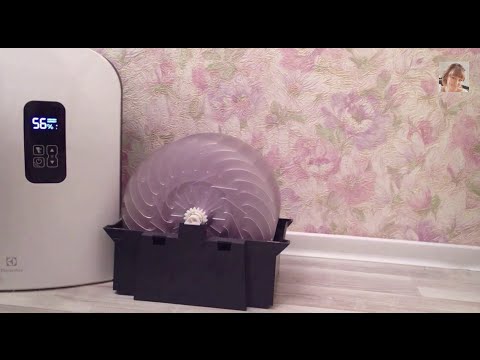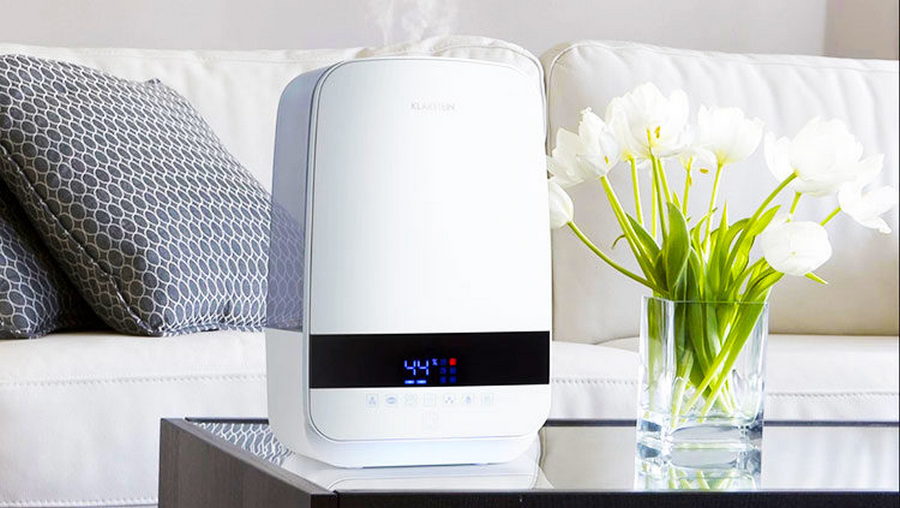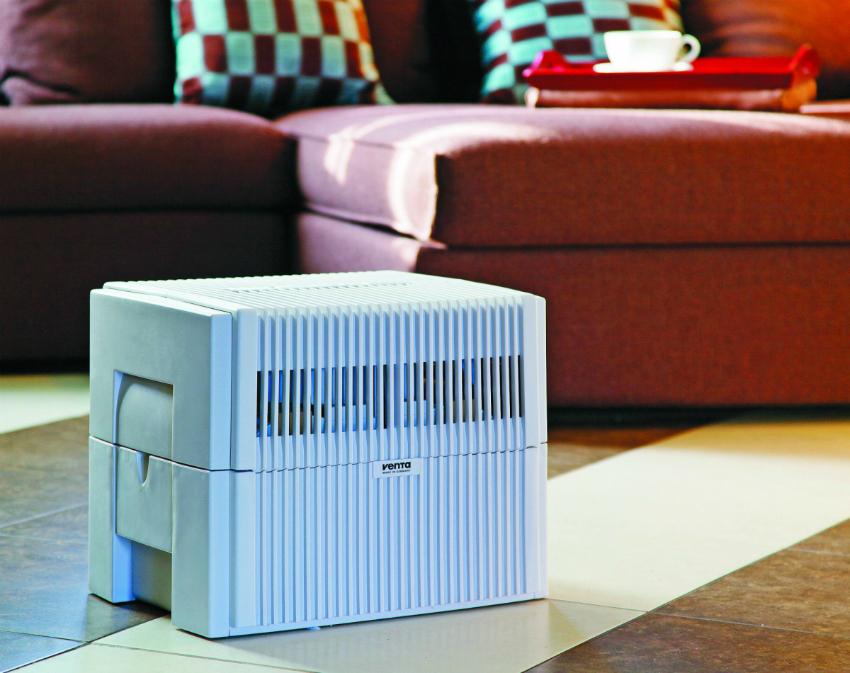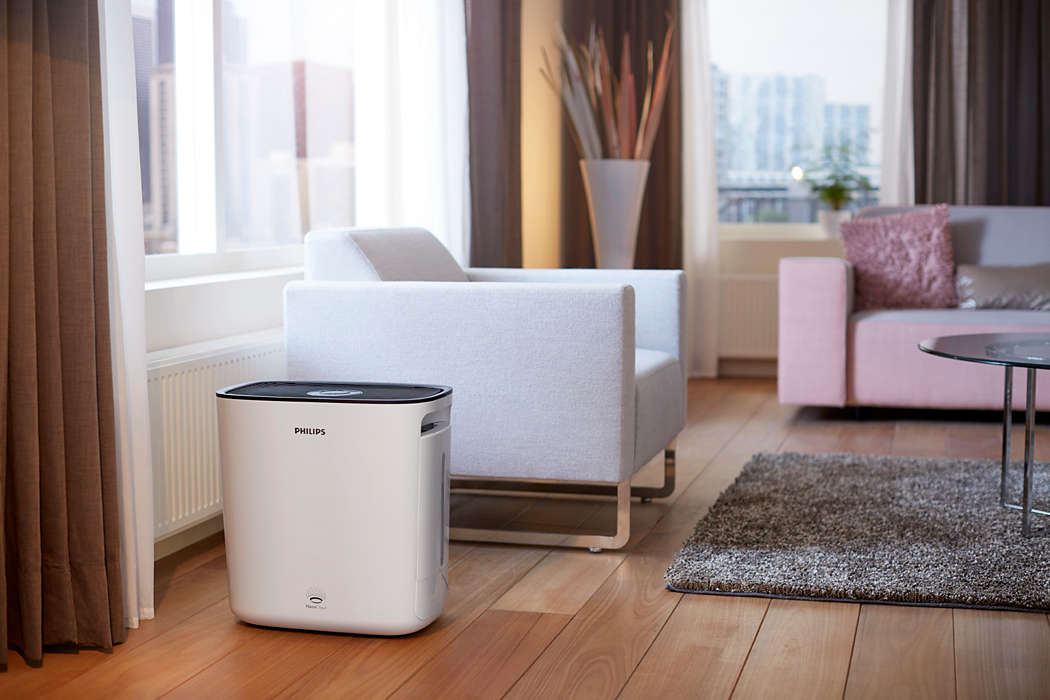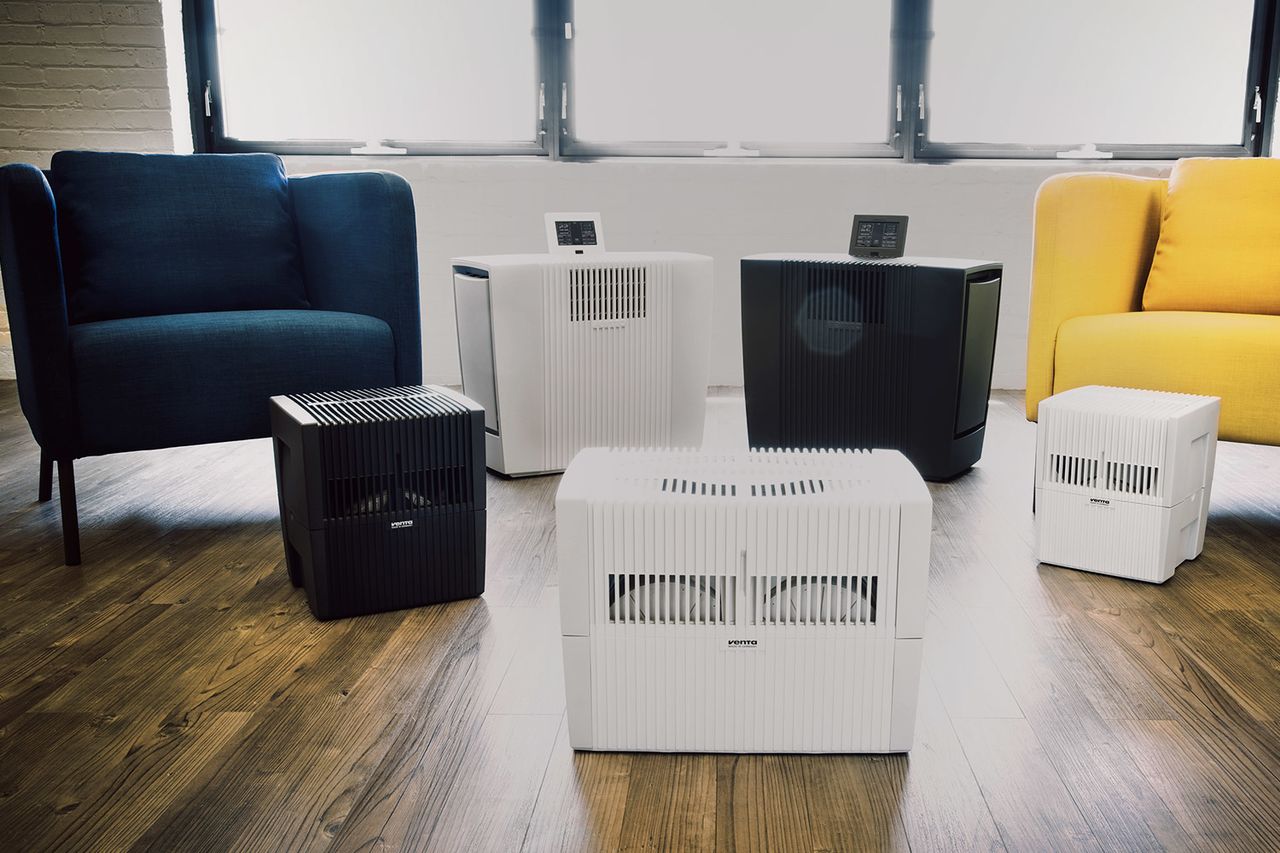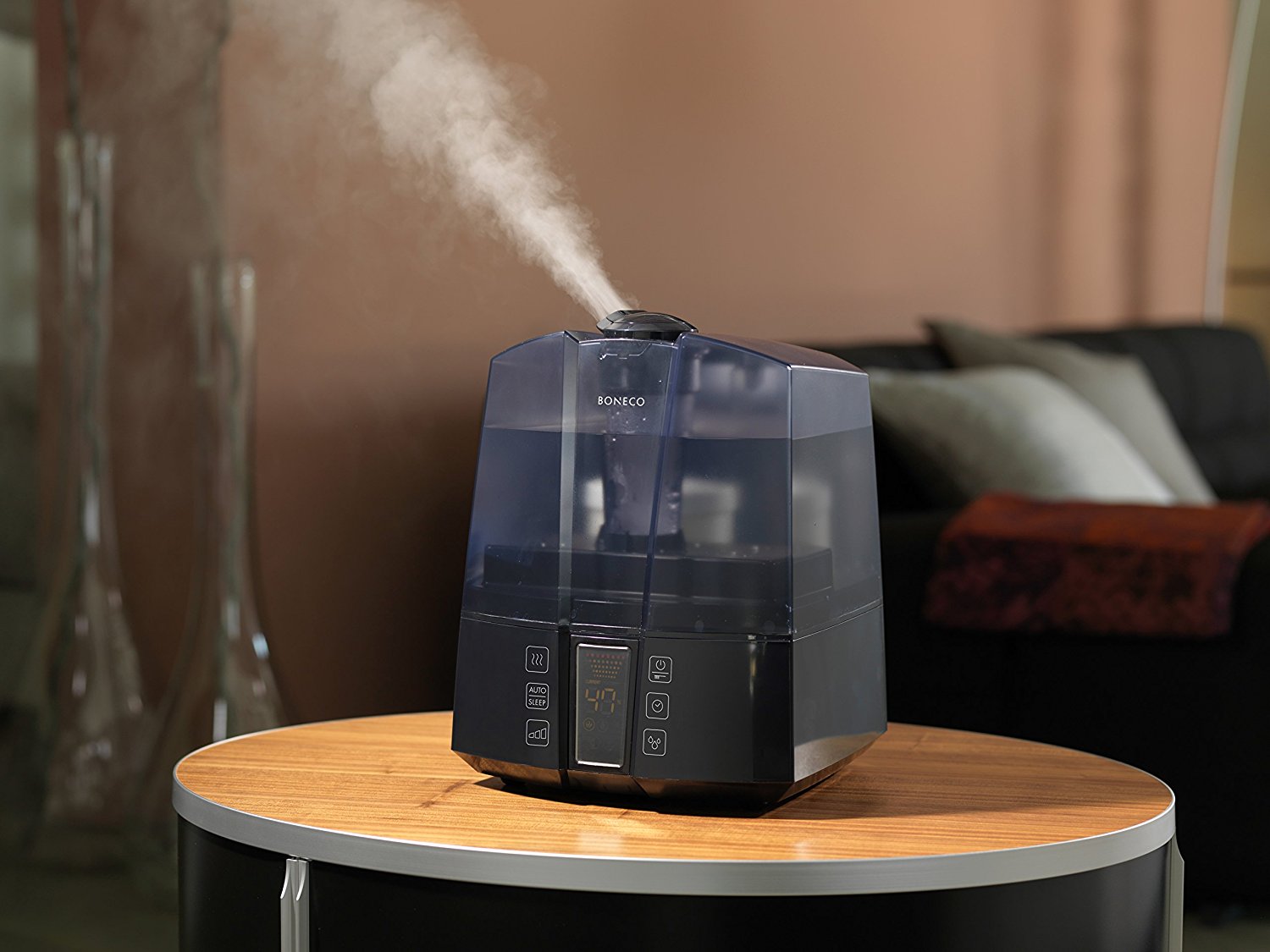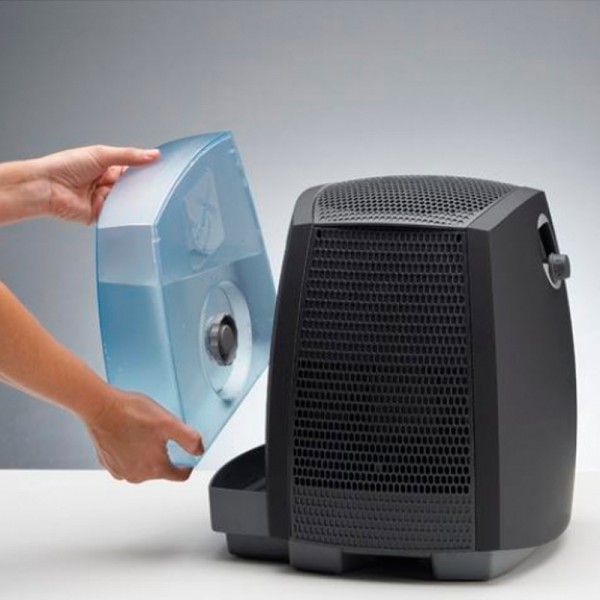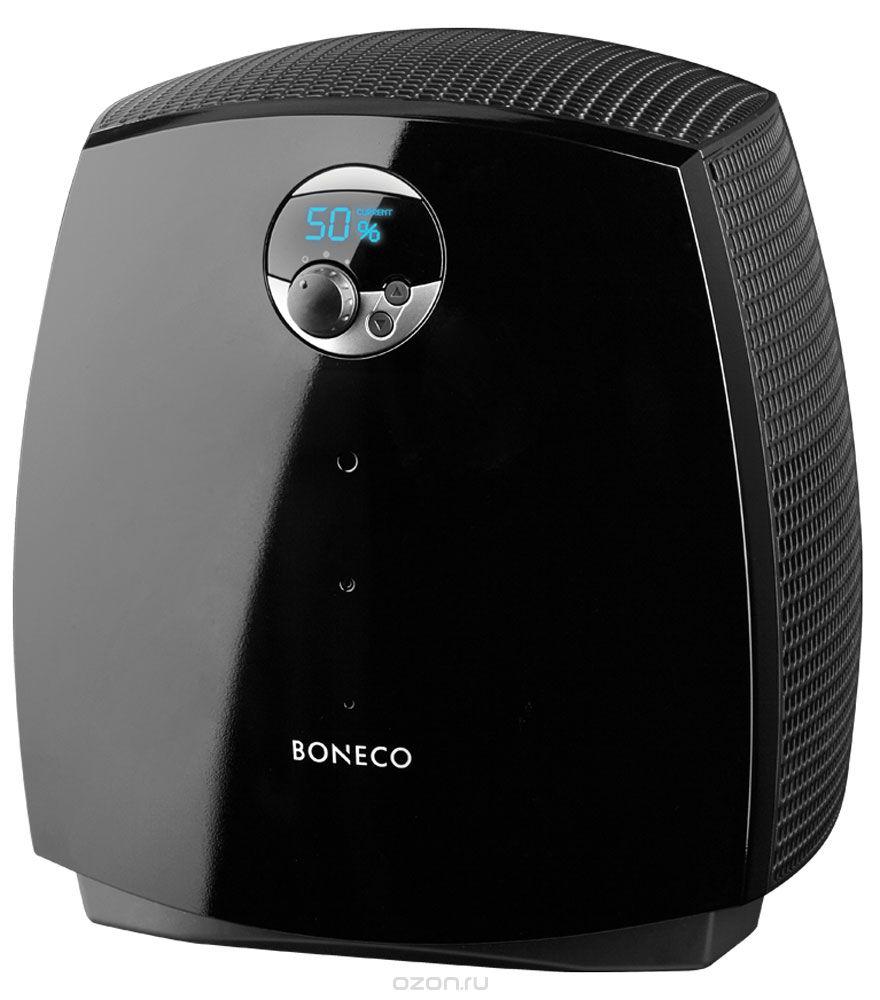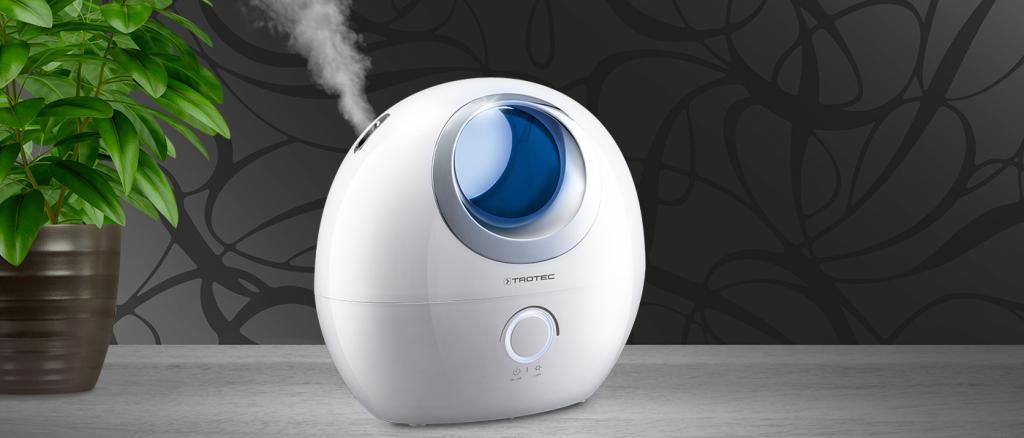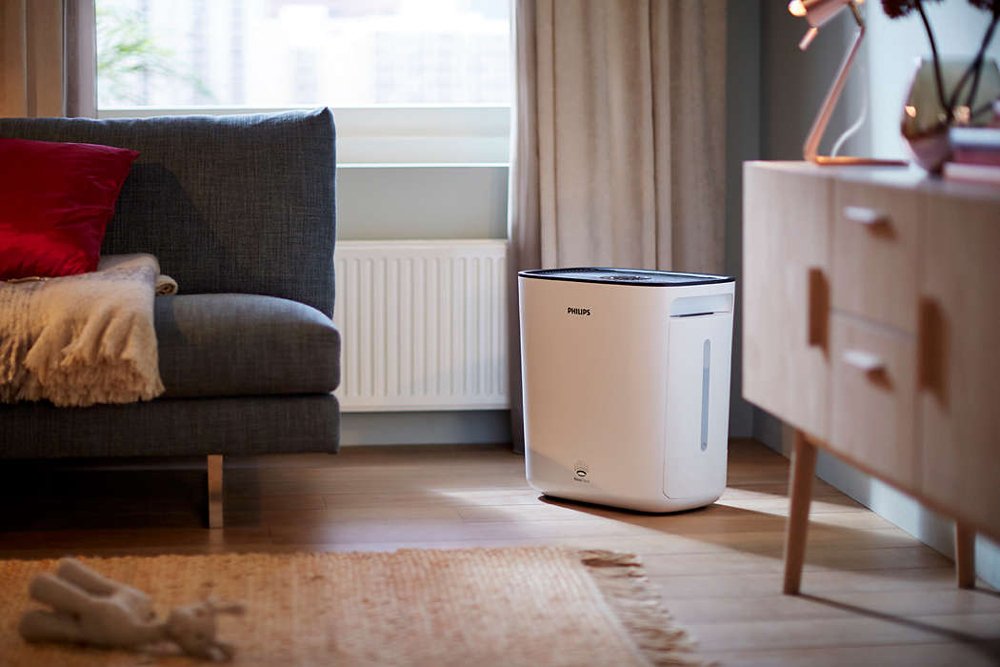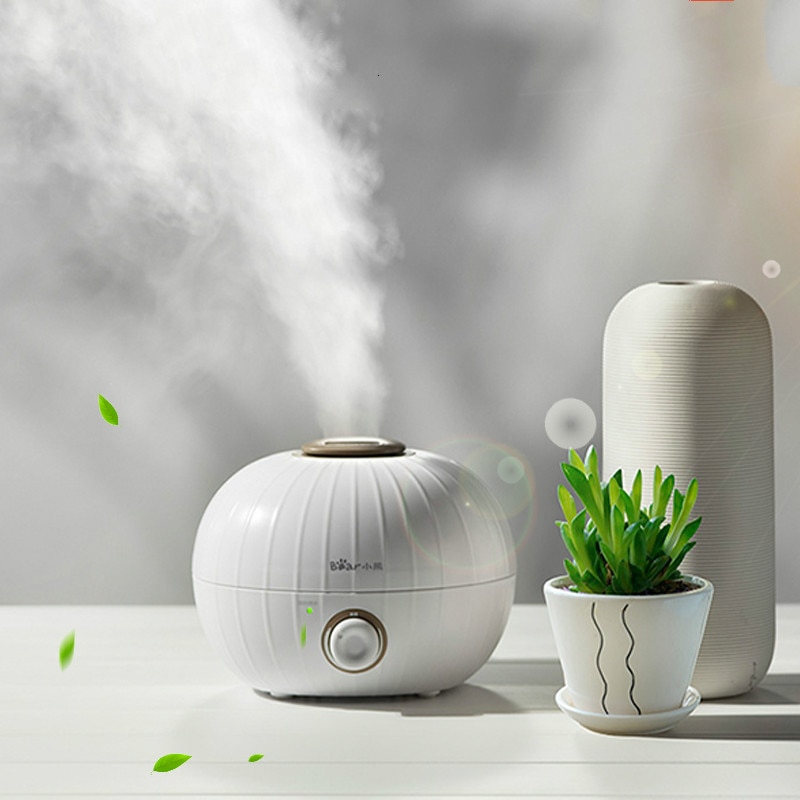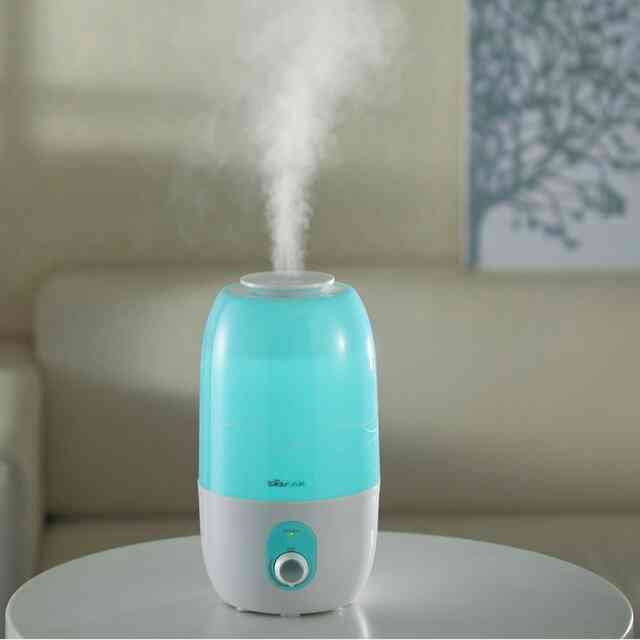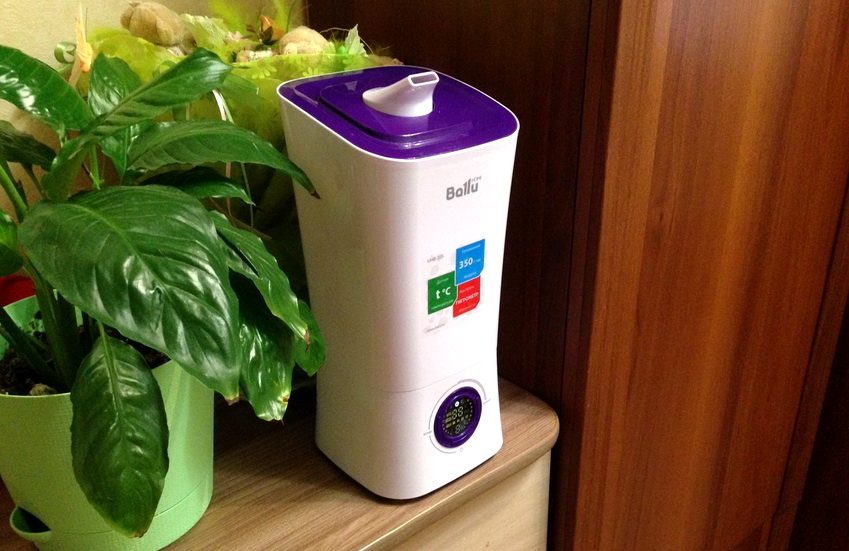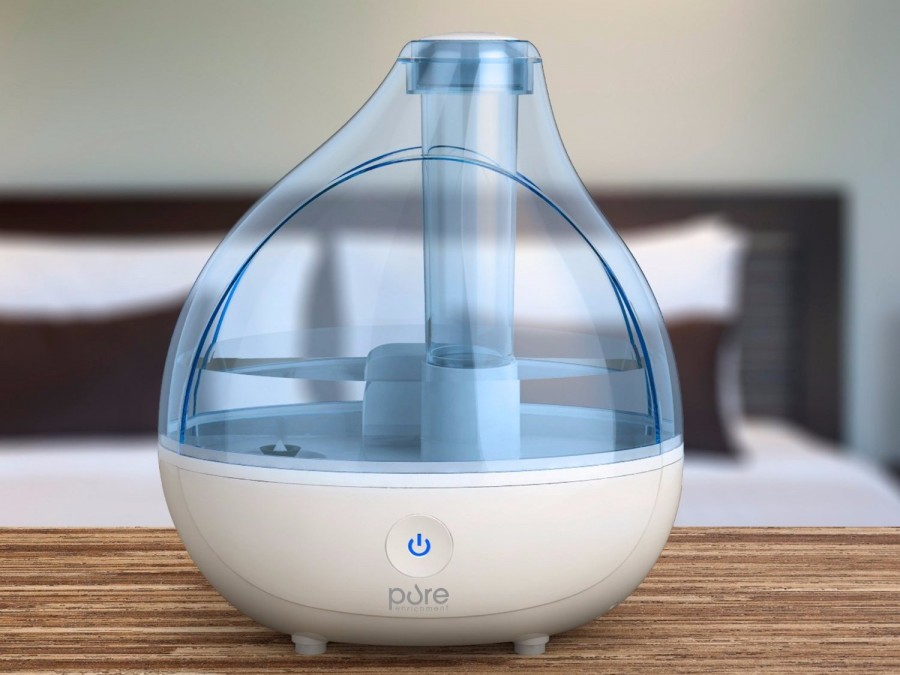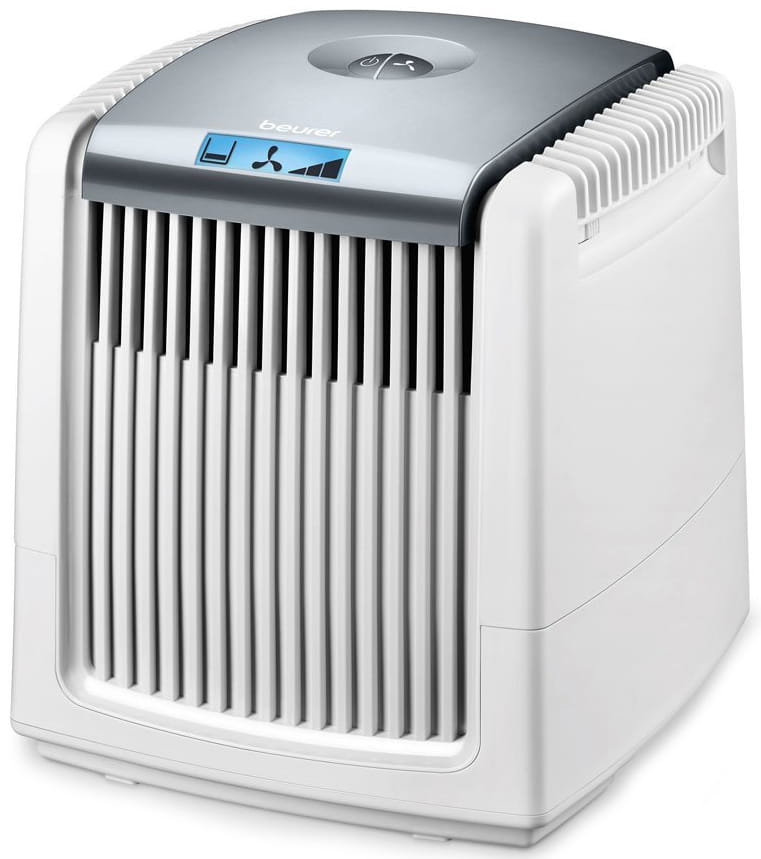How the air washer works
Air washer is a household appliance for humidifying and purifying the air. There are two types of devices with different design features:
- with disc rod;
- with a hydrofilter.
The first type of devices is an air wash, the principle of which is the passage of air through rotating plates, partially immersed in water. The basic design of such a humidifier-purifier includes:
- a fan located at the top;
- drum - a rod with thin working plates;
- a reservoir with water, located at the base of the device case, the lower segment of the discs is lowered into it.
The fan blows air into the sink. It passes through moistened rotating plates, while the binding of contaminants occurs: they get wet, become heavy and settle in the water tank. In addition, the air is naturally saturated with moisture. The treated stream exits through openings at the sides or top, depending on the design of the unit.
The photo shows how the air washer works
In the air washer with a hydraulic filter, the drum with the plates is replaced by a cone that acts as a circulation blower. It creates an air-dispersive environment through which the air flow drawn in from the room passes. This is how it is cleansed and moisturized. Water droplets may be thrown out with the stream. The second type of sink is rarely used in domestic conditions.
Pros and cons of humidifiers
Benefits of using humidifiers:
• establishes a stable level of moisture in the room, which has a positive effect on well-being and mood;
• prevents dry eyes, premature aging of the skin;
• creates a favorable environment for indoor plants;
• simple device setup and control;
• affordable price and economical mode of operation makes the device affordable for everyone;
• additional functions will make the room air clean and safe for health.
The disadvantage of air humidifiers for the home is the insufficient range of action. Indicators within a radius of a meter from the device and the far corner of the room can vary significantly.
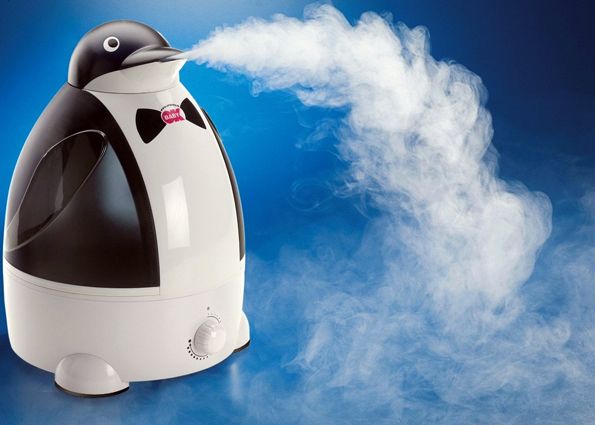
Which is better to choose
When choosing a device, it is recommended to take into account the needs and capabilities. All devices have advantages and disadvantages. The humidifier is localized and delivers a stream of moisture. It gradually dissipates and provides room moisture. Such devices are small in size and affordable. They are easy to manage.
The sink is suitable for large rooms. It is an advanced humidifier model. The same applies to air cleaners and climate systems. Moreover, such devices are much more expensive.
Air purifiers featuring a multi-stage cleaning system are suitable for all
However, before purchasing, it is important to review the information regarding the availability of replacement filters, their lifespan and cleanability.
Improving air quality is considered an important goal. For this, it is permissible to use different devices - a humidifier, a sink, a purifier or a climate complex.
When choosing a specific device, it is worth focusing on the needs and capabilities.
Share link:
1 Types of humidifiers
The optimal level of humidity in an apartment is determined as follows: for people and pets, the norm is 40-60%, and ornamental plants require 50-70%. Dry air is one of the causes of weakness, the development of ailments and a decrease in immunity. This factor contributes to the occurrence of colds and viral diseases.Women who care for their skin know well that it is 70% water and needs regular hydration.
There are many types of humidifiers. But although they evaporate water in different ways, the design of the devices is arranged as follows:
- Tank - a container into which you need to pour water.
- Heating element, ultrasonic module or fan - a part designed to accelerate the evaporation of water from the tank, its transfer into space in the form of a suspension.
- Control system (not available on all models).
- The body in which all the specified elements are located.

All devices function according to the same principle. They absorb dry air from the room, feed it with moisture in one way or another and return it to the room. Some types of devices can carry out filtration and disinfection. As a result of the operation of the humidifier, the apartment becomes fresh, the air is cleared of allergens, microbes and dust.
Criteria for choosing a humidifier for home
The optimal level of humidity in the room is considered to be 40-60%. In principle, any humidifier, the power of which corresponds to the square of the room, can provide the required comfortable microclimate. However, there are other factors to consider when choosing a device.
• Choose the type of humidifier taking into account its performance and safety of use. The device for installation in children's rooms is especially carefully selected.
• Many consumers give preference to models with filters, because it is in them that all harmful microorganisms and bacteria settle. These moisturizers are especially recommended for those with asthma or allergies.

• The volume of the water tank should be medium in size. Large containers, as a rule, are installed in large enclosures that take up the useful area of the dwelling. And miniature glasses require regular topping up of water, which becomes extremely inconvenient to maintain the humidifier.
Whatever device is used to create a healthy microclimate, it is worth remembering that timely maintenance and replacement of filters will extend the service life of the device and make living in a home comfortable.
Features of the washing device
The main difference between air cleaning and a humidifier is the ability not only to humidify the air, but also to purify it. Such a device is able to maintain constant air circulation in the room and an optimal balance of humidity. The use of such a device eliminates the risk of waterlogging.
The sink is very similar in its features to a traditional humidifier, but it is stronger and more functional, and also makes less noise. Inside such a device there is a drum with special plastic rollers or discs, on which an antibacterial coating is applied. During the rotation of the drum, such structural elements are partially lowered into the water. At the same time, the fan rotates, which drives air from the room into the device. Accordingly, contaminated particles from the environment are deposited on the rollers and washed off with water. The cleaned and moistened air is released to the outside. It would seem that washing the air is an excellent option for maintaining comfortable humidity in the home, because it:
- Screens out a significant amount of harmful impurities and dust.
- Unable to form white patches.
- Perfectly safe for children.
- Needs a small amount of electricity.
But at the same time, the sink humidifies the air an order of magnitude slower than humidifiers. And if the room is not airtight, this process slows down at times. Also, such a device is quite cumbersome and costs more, which is explained precisely by the additional functions.
Recirculation function

All humidifiers have a fairly limited area of effect, and the sink cleans the environment evenly. This effect is due to the additional presence of a special fan.When choosing an air washer, it is imperative to take into account what area it will work on.
It is also important to remember that if there are cracks in the room, open doors and general leaks, the device will not be able to show itself 100%
Natural hydration
The air washer is distinguished by its ability to perfectly regulate and maintain the humidity in the room at the correct level. It does not have specific systems for regulating this parameter - the air simply "takes" as much moisture as it needs. Such a system of work is based on the natural ability of air in nature to balance its own state - at a comfortable humidity level of 55%.
Of course, in order to maintain the efficient operation of the sink, it is necessary to regularly add water to a special tank.
Features of the humidifying device
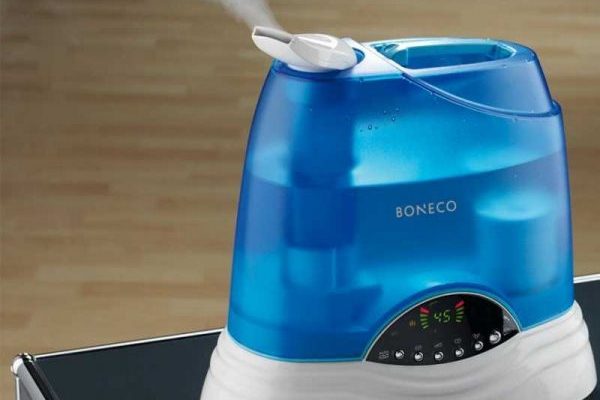
In hardware stores, you can now see many different humidifiers, differing in design and cost. But such devices also have some functional features. In particular, all devices can be divided into:
- Classic.
- Steam.
- Ultrasonic.
Before buying, it is better to understand the features of all varieties. This will help you make the right choice.
Classic models
These are the simplest humidifiers, which are distinguished by a simple device. Such devices are equipped with a fan that drives air through a wet filter, after which the latter comes out already humidified. The filter can be further improved with antibacterial components, ionizing particles, etc.
A classic humidifier has several significant advantages:
- It is absolutely safe as it does not emit hot steam.
- The air during its application cannot be excessively humidified, since steam is not generated forcibly. The air takes in as much moisture as it needs.
- Requires a small amount of electricity.
- Does not lead to the formation of a specific white coating on furniture.
- Does not require the use of purified filtered water.
A convenient and versatile classic humidifier also has some drawbacks, the main one being the need to regularly change filters (at intervals of a couple of months). In addition, such a device most often makes a noticeable noise and has a low performance - it can only work in rooms with a small area.
Steam models
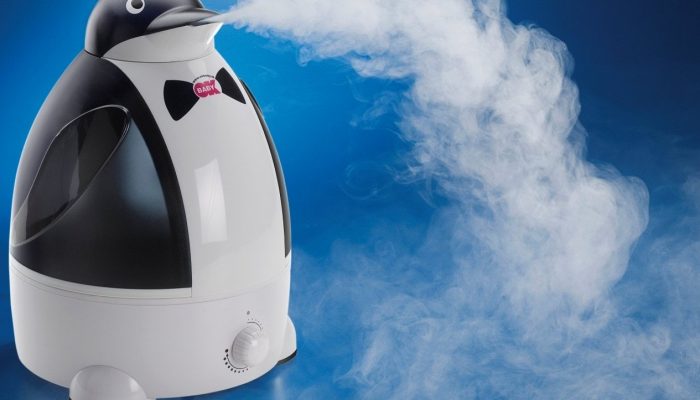
Such devices humidify the air by heating the water inside the device, the steam from which subsequently rises (with slight acceleration). Heating is carried out using heating elements or electrodes. Steam models provide:
- Fast, effective and high-quality moisturizing. It is believed that they are able to raise the humidity level in the room as quickly as possible.
- High level of security. Only the first portion of steam can be a little hot (immediately after turning on the device), but it is simply impossible to get scalded by it, in accordance with the assurances of the manufacturers.
- Hygiene. Thanks to heat treatment, many microorganisms are destroyed, the flask with water itself remains sterile, the device does not need filters and, of course, their replacement.
- Humidification of the home, regardless of the ambient temperature.
- Excellent hydration without white coating on surfaces.
However, it should be borne in mind that when using a steam humidifier, you may encounter the problem of limescale on the heating elements. Because of it, the device can work quite noisy over time and even burn out (if the scale is not removed). In addition, during intensive operation of the device, the surrounding objects become covered with condensation - water droplets.
Ultrasonic devices

These moisturizers are by far the most popular. They function thanks to a built-in emitter, which, under the influence of alternating current, vibrates at the frequency of ultrasound, breaking the water into tiny particles.It is this finely dispersed vapor that is pushed outward, providing air humidification. There are a variety of ultrasonic humidifiers on sale:
- With cold vapor (water mist) or warm vapor.
- With many additional options, for example, steam separation on several sides, steam sterilization, selection of the humidification level. Many models have a built-in hygrometer (not always accurate), which allows you to put the device into sleep mode when the humidity level in the room reaches the required values.
- With electronic displays that show all the features of the device.
However, such devices also have disadvantages:
- In the absence of a hygrometer, they often work beyond measure - they make the air excessively humid.
- They work only on special water - purified and demineralized. Otherwise, the service life of the device is reduced significantly, and the device is no longer amenable to repair.
- They cover a relatively small area.
Many owners of ultrasonic humidifiers complain that such devices lead to the appearance of a white coating on all surfaces, especially furniture. Using distilled water reduces the risk of this effect, but it costs money.
Distinctive features
There are many devices that are used to improve air quality. Each device has advantages and disadvantages.
Air wash
Currently, there are 2 types of sinks - conical and disc. Some models have a built-in hygrometer. Such devices operate in automatic mode, maintaining humidity at 40-60%. With the help of air washing, it is possible to clean it from various mechanical impurities, the size of which exceeds 2.5 microns. These include pollen, wool particles, dust.
The main advantages of the products include:
- thorough cleaning from coarse and medium dust;
- natural hydration;
- aromatization;
- the presence of an ionizer in some models;
- low maintenance costs;
- compliance with environmental characteristics.
At the same time, the following disadvantages are characteristic of the humidifier:
- the need for systematic cleaning;
- large sizes;
- medium or high noise level;
- ineffective for fine dust, exhaust fumes, smoke or smog.

Air purifier
Such devices are characterized by many modifications. This helps you choose the right model for your individual needs. The set often contains photocatalytic systems, ionizers, filters.
The main advantages of air purifiers include the following:
- thorough cleansing;
- relatively low price of replacement parts;
- the ability to choose the most suitable model;
- medium or low energy consumption;
- various models - there are devices for easy cleaning or specialized devices for allergy sufferers.
At the same time, cleaners also have disadvantages:
- narrow area of use;
- high cost of individual devices and consumables;
- impossibility of round-the-clock use - purifiers can oversaturate a room with ozone or disrupt the natural microclimate.
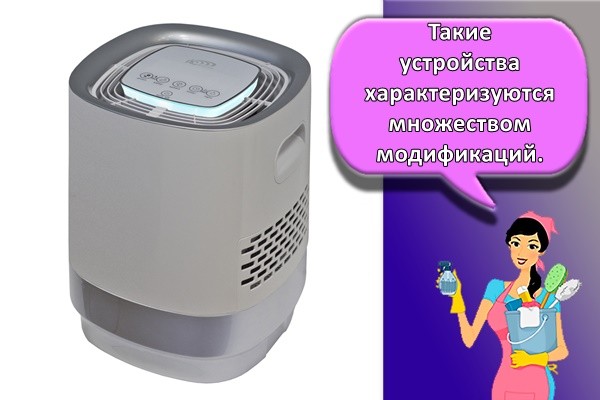
Climatic complex
This is a whole complex of devices that help to create a suitable indoor microclimate. The device combines a humidifier and a purifier in one housing. This technique can be used in an apartment or office.
The UV lamp has bactericidal properties, and the ionizer helps to charge mechanical particles with negative ions. The advantages of climatic complexes include the following:
- the ability to choose a control system - it can be mechanical or programmable;
- complete cleaning and moisturizing;
- variety of models;
- availability of additional options.
At the same time, some disadvantages are characteristic of such devices:
- lower efficiency of heating and cooling functions in comparison with split systems;
- slow humidification, which makes it impossible to transfer the device to other rooms;
- high cost of equipment and maintenance - it is required to systematically replace filters, renew cartridges, use clean water.
